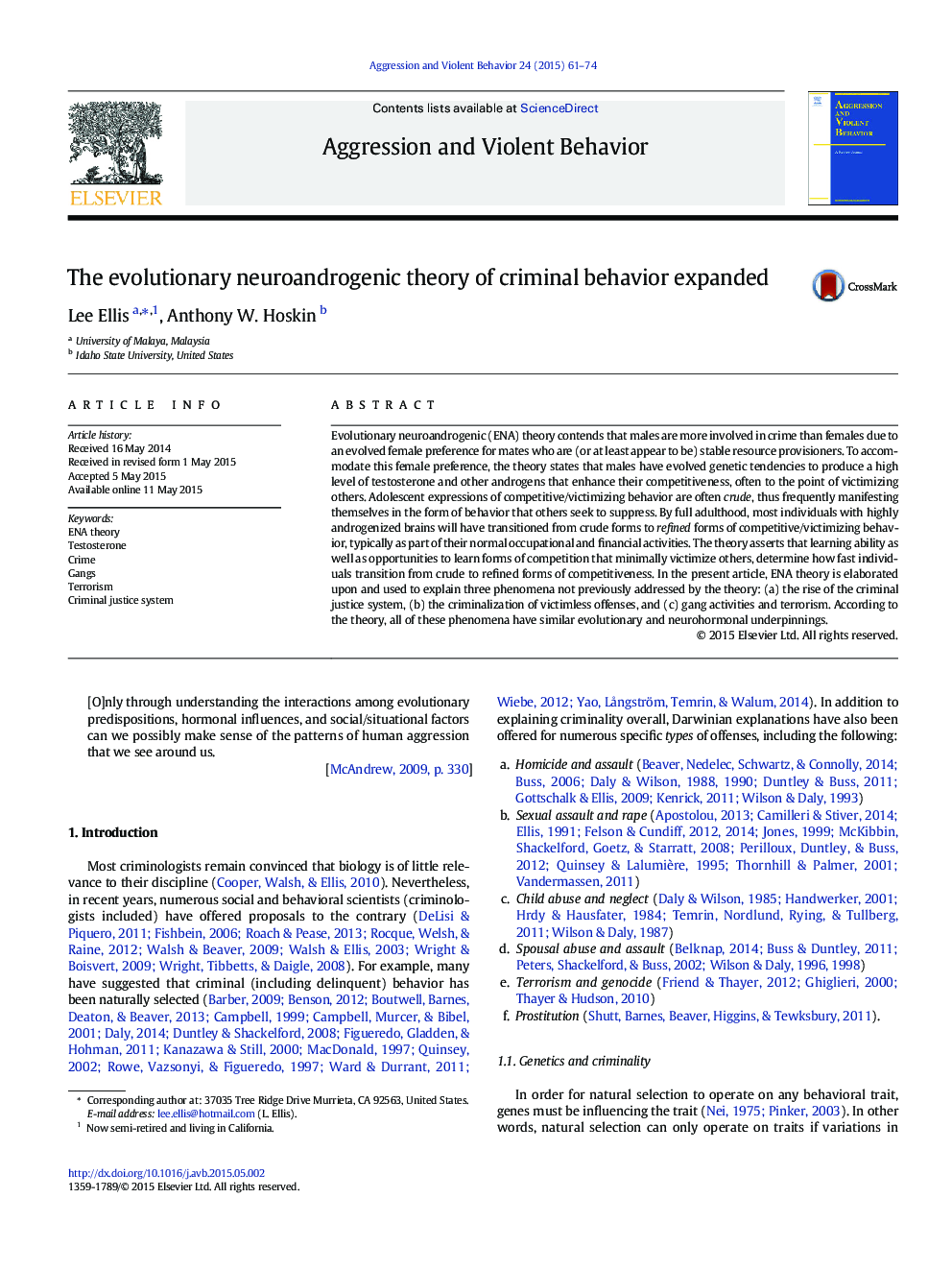| کد مقاله | کد نشریه | سال انتشار | مقاله انگلیسی | نسخه تمام متن |
|---|---|---|---|---|
| 94477 | 160300 | 2015 | 14 صفحه PDF | دانلود رایگان |
• Female preference for a provisioning mate evolved competitive, victimizing males.
• Crude forms of victimizing behavior are generally criminalized.
• Brain exposure to androgens promotes competitiveness and victimizing.
• Diverse crime types and the rise of the criminal justice system are explained.
Evolutionary neuroandrogenic (ENA) theory contends that males are more involved in crime than females due to an evolved female preference for mates who are (or at least appear to be) stable resource provisioners. To accommodate this female preference, the theory states that males have evolved genetic tendencies to produce a high level of testosterone and other androgens that enhance their competitiveness, often to the point of victimizing others. Adolescent expressions of competitive/victimizing behavior are often crude, thus frequently manifesting themselves in the form of behavior that others seek to suppress. By full adulthood, most individuals with highly androgenized brains will have transitioned from crude forms to refined forms of competitive/victimizing behavior, typically as part of their normal occupational and financial activities. The theory asserts that learning ability as well as opportunities to learn forms of competition that minimally victimize others, determine how fast individuals transition from crude to refined forms of competitiveness. In the present article, ENA theory is elaborated upon and used to explain three phenomena not previously addressed by the theory: (a) the rise of the criminal justice system, (b) the criminalization of victimless offenses, and (c) gang activities and terrorism. According to the theory, all of these phenomena have similar evolutionary and neurohormonal underpinnings.
Journal: Aggression and Violent Behavior - Volume 24, September–October 2015, Pages 61–74
